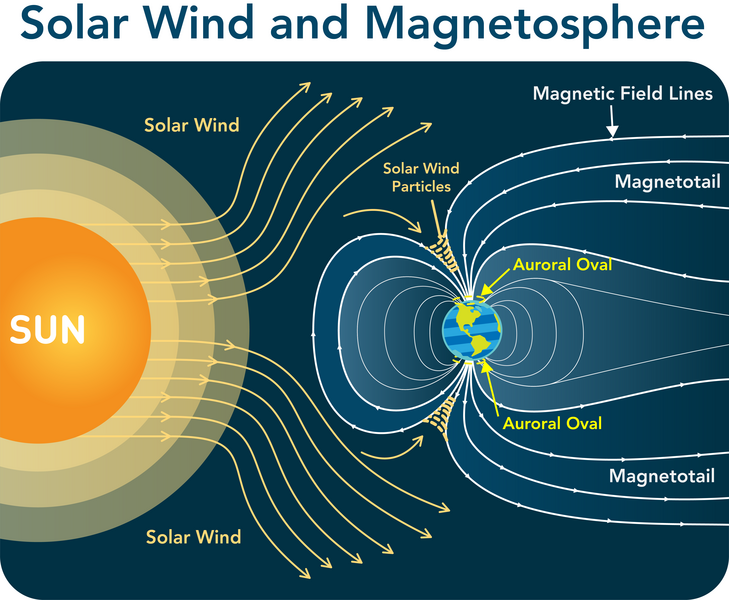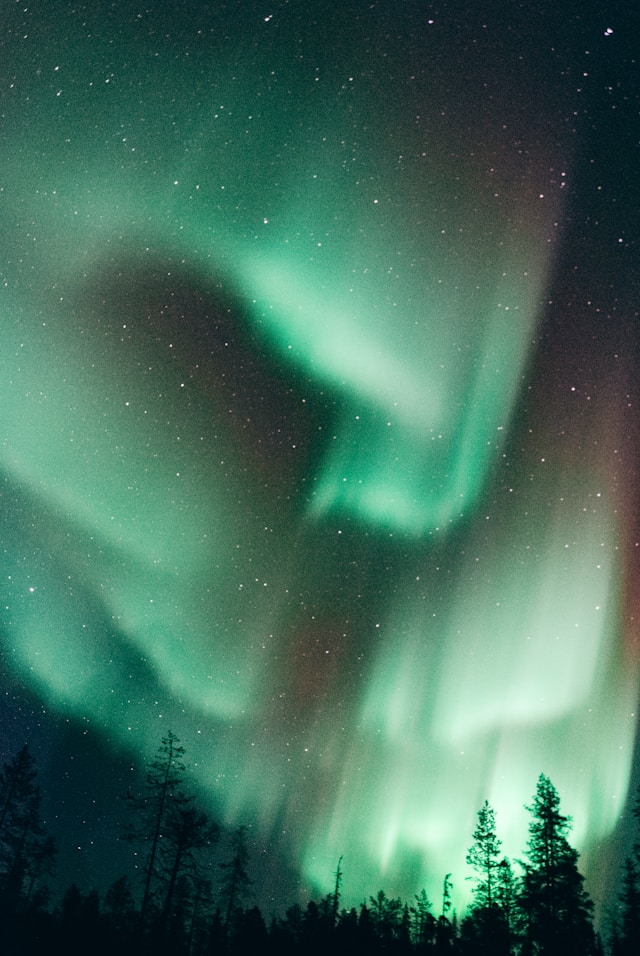Hello! Recently, I had a fortunate chance to witness an Aurora Borealis. It was ethereal; ribbons of fluorescent green and hues of purples adorned the sky. It seemed surreal – and it made me wonder how this phenomenon occurs.
What is an aurora and how does it occur?
Auroras are brilliant lights shining across the Earth’s northern and southern poles. The auroras in the northern hemisphere are called the aurora borealis and those in the southern hemisphere are called the aurora australis.
Auroras occur through the interaction of Earth’s atmosphere and solar wind. The sun is a ball of very hot gasses, composed of charged particles called ions. Everyday, the sun ejects these charged particles (electrons and protons) from its corona — these particles are called solar wind. If the solar wind were to reach Earth, all life would cease to exist. However, the magnetic field around Earth prevents the solar wind from reaching the atmosphere. Due to the shape of the magnetic field lines, some solar wind particles can interact with our atmosphere– at the north and south poles. The ions interact with the atoms, heating them up, and resulting in the fluorescent colors of the aurora.

An interesting thing to note is that the auroras are always present- as the sun is always ejecting solar wind- but it is not visible due to the amount of solar wind.
Why are there different colors?
The shades of the aurora change due to the altitude and the type of atoms that react with the charged particles. Every atom absorbs and radiates specific colors when they are heated up. When the ions contact oxygen atoms – this produces red. At lower altitudes, ions that contact oxygen atoms result in a typical green color. Ions contacting hydrogen and helium atoms result in blue and purple auroras.
Sources:
https://www.space.com/15139-northern-lights-auroras-earth-facts-sdcmp.html
https://www.asc-csa.gc.ca/eng/astronomy/northern-lights/what-are-northern-lights.asp
https://education.nationalgeographic.org/resource/aurora/
https://letstalkscience.ca/educational-resources/backgrounders/auroras-spectacular-light-shows

